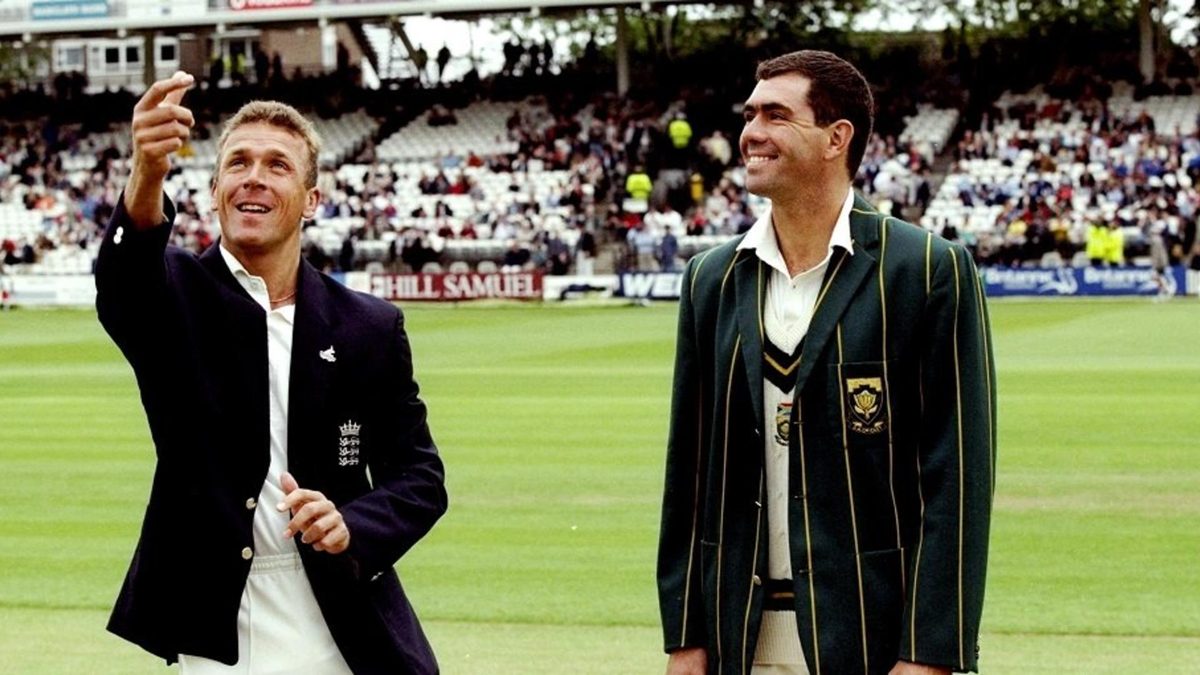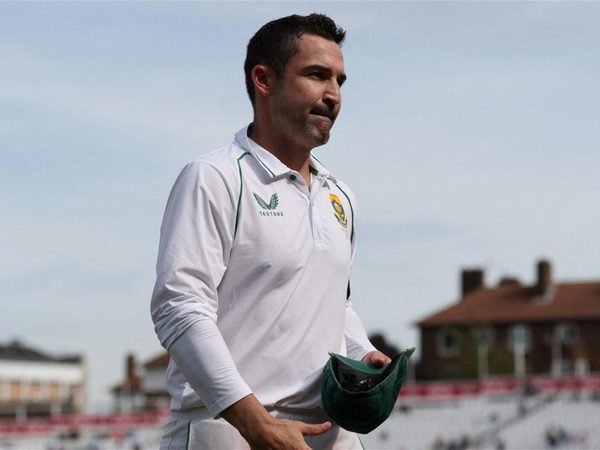
The name of the city may seem odd in the headline, but there’s a reason for it. Of the 19 times England and South Africa met at a venue called Lord’s for a men’s Test match, three were in Durban, at the Lord’s No. 1 Ground. Here, however, we shall pick our list from the other 16.
An extra-ordinary performance
South Africa first toured England for a Test series in 1907. Percy Sherwell’s defiant 115 and a washed-out day (in a three-day match) had helped South Africa escape the Lord’s Test on that tour.
No such luck awaited them in 1912, where Lord’s hosted the sides as part of the Triangular Tournament, the first ‘World Cup’ of cricket. Between them, Sydney Barnes (5-25) and Frank Foster (5-16) shot out South Africa for 58. The words ‘between them’ is probably more literal than most cases: six batters were bowled, two leg-before, two caught by Foster, and one by Barnes.
But that was not where it ended. Dave Nourse top-scored for South Africa with 13 – and yet he did not, for there were 17 extras. This was the first instance of extras top-scoring in a completed Test innings. England won by an innings.
An early sighting of Bodyline – or should that be Headline?
Bodyline was some time away, but by the late 1920s, Harold Larwood was already a threat to batters in more ways than one. He was not hesitant to bowl the bouncer, with one of his most famous short balls coming at Lord’s in 1927, when he knocked Dick Twining of Middlesex unconscious.
Two years later, South Africa were down to 86-5 in the fourth innings in the same venue. As Denys Morkel and wicketkeeper Jock Cameron tried to salvage a draw, a ball from Larwood rose steeply and hit Cameron on the left ear. He fell, unconscious, and had to be stretchered off by his teammates. He had to be hospitalised, his “eyes swimming like ornamental fish in a bowl,” as Duncan Hamilton would later write.
However, Tuppy Owen-Smith helped Morkel save the match.
Hellenic glory
South Africa had used the googly to great effect to beat England in the 1910s, but the tables had turned over the next few decades. So, in 1935, they took things to the next level, by unleashing a Greek googly bowler.
Xen Balaskas took 22 wickets in nine Tests, but at Lord’s in 1935 he took 5-49 and 4-54. Legend goes that he had been walking around London with journalist Louis Duffus, who advised him to enter Greek Street for some luck. As if that was not enough, Balaskas patted the belly of a pregnant lady – for bonus luck, one can presume.
Luck did indeed go South Africa’s way. A leatherjacket invasion had left the pitch bone-dry, and South Africa won the toss. Balaskas, all Greek to a strong English line-up, did the rest; South Africa won a Test match on English soil for the first time.
Twin trouble
In 1947, Bill Edrich beat all existing records by amassing 3,529 runs in first-class cricket. However, he still finished second that summer, for his Middlesex teammate Denis Compton got 3,816. They still occupy the top two places for most runs in a season.
In the Lord’s Test, the two local heroes got together at 96-2 – and added 370 runs, at that point a world record for the third wicket. Edrich finally fell for 189, while Compton got 208. Edrich then took three wickets and held four catches, while Compton took four wickets.
Forty-four years later, they had stands named after them at the same venue.
Edrich felled
The Compton-Edrich show paved the way for more consecutive English wins at Lord’s, in 1951 (Roy Tattersall: 7-52 and 5-49), 1955 (Brian Statham: 2-49 and 7-39), and 1960 (Statham again: 6-63 and 5-34). However, in the 1960s, South Africa began a turnaround; and by the time they returned to England, in 1965, they were on their way to become a formidable force.
The Lord’s Test match, the 100th between the sides, produced a tense finish. England began well in pursuit of 191 in 235 minutes. Then, at 37-1, Peter Pollock ran down the slope and hit Edrich on the forehead. He keeled over and had to retire.
It came down to Fred Titmus (already four wickets and a first-innings 59) to save the Test match along with Fred Rumsey after England were seven down. However, South Africa took the Trent Bridge Test match to claim their first series win in England.
Dirty tricks
In 1994, Lord’s hosted England’s first Test against South Africa after the latter’s readmission to international cricket. Kepler Wessels celebrated the occasion with a typically gritty 105 before England submitted against a world-class pace attack (they folded for 180 and 99 to lose by 356 runs).
Instead, the attention hovered around Michael Atherton. The television cameras had spotted him rubbing dirt on the ball (a violation of Law 42.5). To make things worse, he provided two versions (first pleading guilty, then innocent) to match referee Peter Burge. England chair of selectors Ray Illingworth’s efforts – a £2,000 fine – did little towards damage control as the media and fans called for Atherton’s resignation.
Atherton was not the first to violate the particular law of cricket, but he was almost certainly the first to be caught on television camera during a Test match. It took time for things to return to normalcy.
The hosts repay
Perhaps keen to establish themselves as generous hosts, England decided to repay South Africa’s debt from 86 summers ago. England came from behind to win the series, marked by a duel between Allan Donald (33 wickets at 19.78) and Atherton (493 runs at 54.77), 2-1.
Donald (5-32) blew England away in their first innings at Lord’s as Atherton fell for a rare duck. Six English batters reached double figures, but none of them made it past 15. The 20 extras, thus, marked the 14th instance of an unusual top-scorer. It has happened twice since.
Moeen’s day out
South Africa won by an innings in 2003, drew in 2008, and won again in 2011, by 51 runs. Their record since readmission read 4-0. They had managed to reduce England’s lead at Lord’s from 6-1 to 6-5. However, on July 9, 2017, Moeen Ali helped England reverse the tide.
Resuming the day at 119-1, England collapsed to 233. South Africa needed 332, and Joe Root brought Moeen on in the eighth over. With 87 and 4-59, Moeen had already been one of England’s key players in the Test match. Now, he got Dean Elgar with his seventh ball, and bowled unchanged to finish with 6-53. South Africa collapsed to 119.
Moeen became the first English cricketer to score a fifty and take ten wickets at Lord’s. Since 1948, it remains the only ten-wicket haul by an English spinner at the venue.








